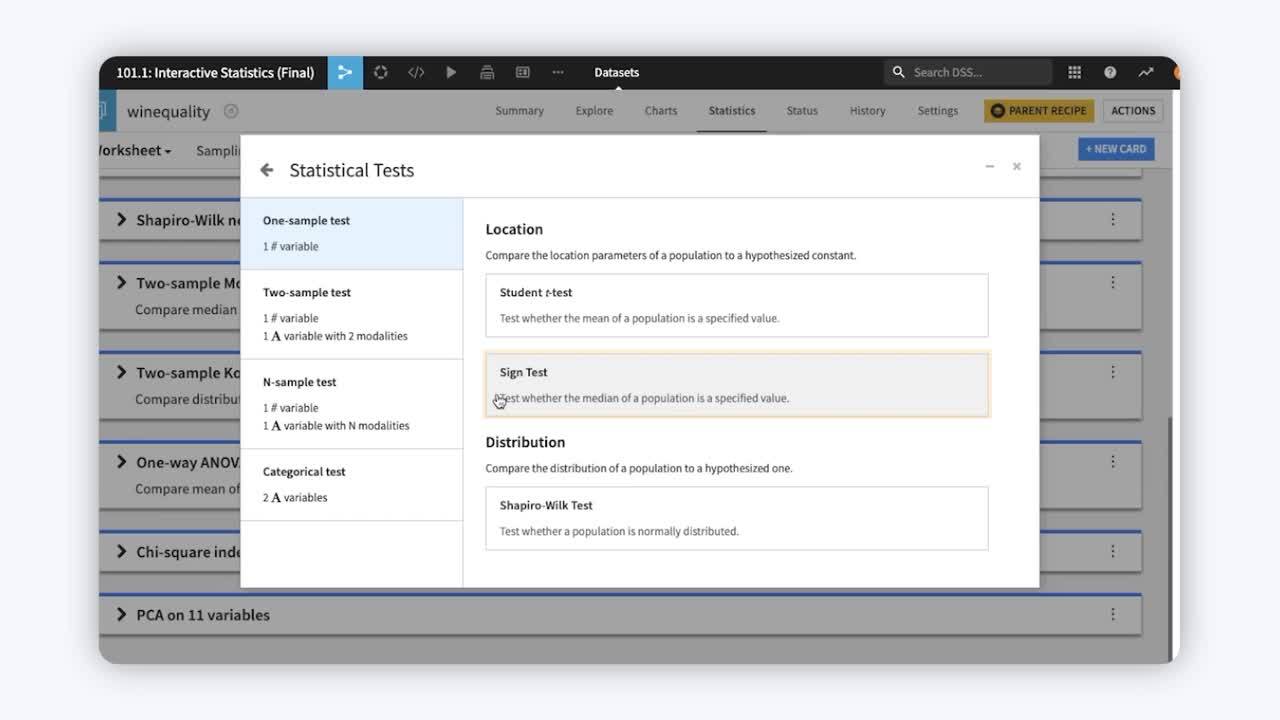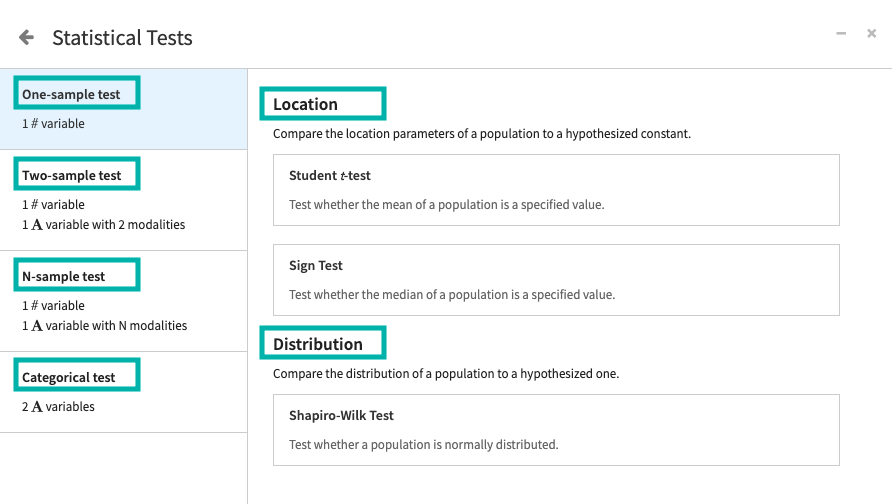Concept | Hypothesis test categories#
Watch the video

Dataiku groups hypothesis tests into categories based on different test attributes.

One-sample, two-sample, and N-sample tests#
One-sample tests consider one population from which a random sample is used to make inferences.
Two-sample tests consider two populations from which independent random samples are used to make inferences.
N-sample tests consider more than two populations with independent random samples that are used to make inferences.
Location or distribution tests#
Location tests evaluate hypotheses about location parameters. For example, the mean of a population (in the case of the one-sample Student’s t-test), and the median of a population (in the case of the Sign test).
Distribution tests evaluate hypotheses about population distributions. For example, one-sample distribution tests compare the distribution of a population to a hypothesized one, and two-sample distribution tests compare the distributions of two populations.
Categorical tests#
Dataiku provides the Chi-square Independence test, to evaluate whether two categorical variables are independent.
Additional test details#
Finally, the header of a hypothesis test card contains a question icon that provides additional details about the test. More specifically, Dataiku displays if the test is a parametric or nonparametric test.

